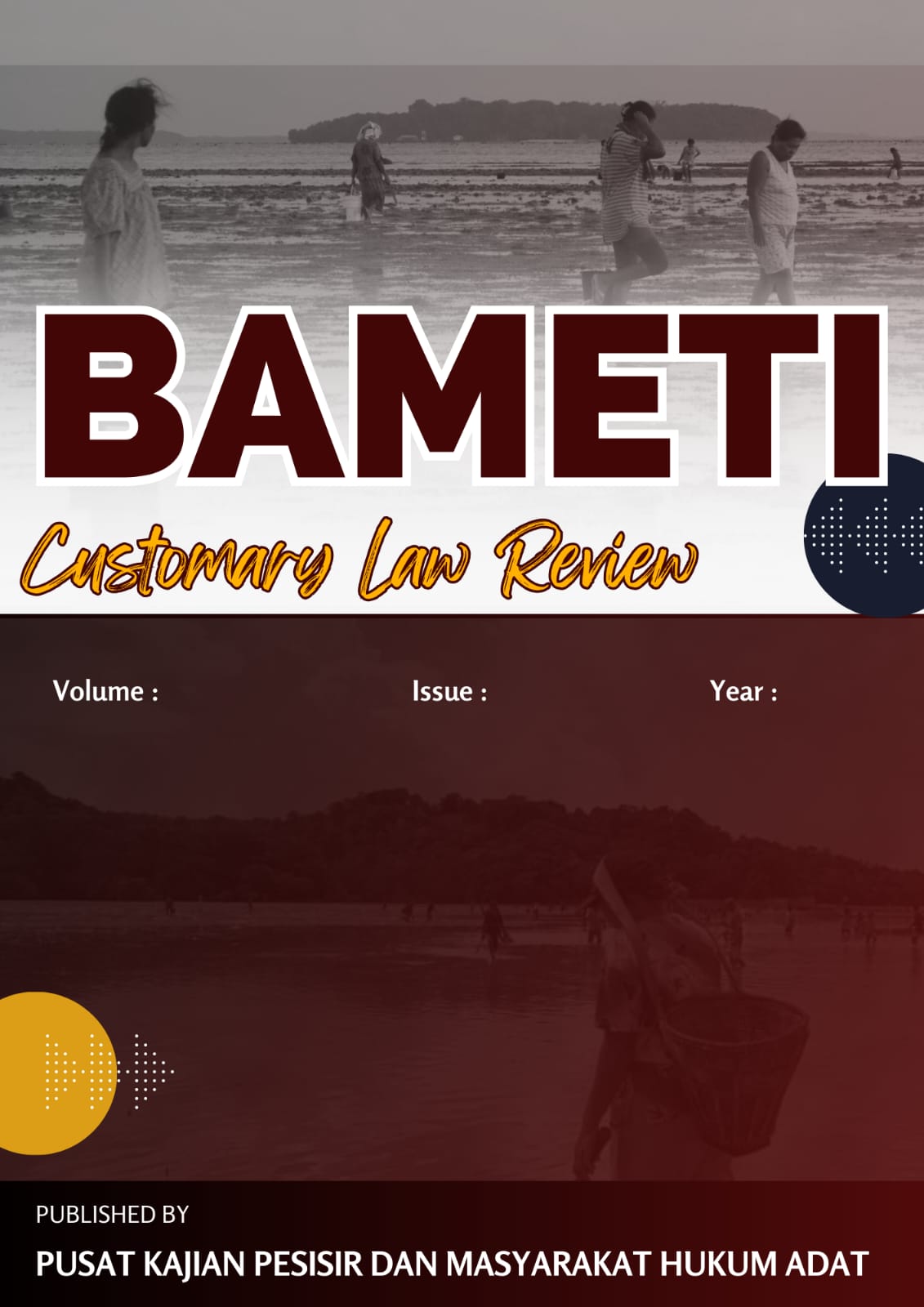Pembagian Harta Warisan Berdasarkan Hukum Adat
Abstract
Customary inheritance law is the legal rules that regulate how to pass on and transfer tangible and intangible assets from generation to generation. Thus, customary inheritance law contains three elements, namely the existence of inheritance or inherited assets, the existence of heirs and heirs. Apart from the three elements of customary inheritance law, it is also influenced by the three kinship systems that exist in Indonesian society, namely the patrilineal system, matrilineal system, and parental or bilateral system so that customary law in Indonesian society is a diverse law. Indonesian society still applies the distribution of inheritance according to customary law, one of which is in Maluku Province, namely Elfule Village which adheres to a patrilineal kinship system, namely the lineage that originates from the father. This can be seen from the clan of the residents of Elfule Village. With this background, the status of men in among indigenous peoples is automatically higher than women. If property is distributed according to customary law in Elfule Village, it is important to note that the son who receives the inheritance from his parents' inheritance is the oldest son. The method used in this research is the sociological juridical method. Research data sources include primary data sources and secondary data sources. Data collection was obtained through interviews and then the data was processed and analyzed qualitatively. The results of the research show that Elfule Village in principle adheres to a patrilineal kinship system, namely the line of descent from the father so that in the distribution of inheritance, Elfule Village adheres to a male majoritarian system, however, in developments based on research results, it turns out that the inheritance process in Elfule Village has experienced a shift where some of the female children have get an inheritance from the assets inherited from their parents such as villages and long-lived plants, why is the daughter's share smaller because when the daughter marries she will follow her husband and join his new family, in this case the distribution of inheritance is done before the heir dies.
Downloads
References
Hilman Hadikusuma. Pengantar Hukum Adat, Bandung: Maju Mundur, 1992.
Hilman Hadikusuma, Hukum Waris Adat Indonesia, Bandung: Citra Aditya Bakti, 1993.
Husen Alting, Dinamika Hukum dalam Pengakuan dan Perlindungan Hak Masyarakat Hukum Adat Atas Tanah, Yogyakarta: Lalsbang Pressindo, 2010.
Ilham Bisri, Sistem Hukum Indonesia: Prinsip-prinsip dan Implementasi Hukum di Indonesia, Jakarta: Rajawali Pres, 2004.
Labetubun, M. A. H., & Fataruba, S. (2016). Peralihan Hak Cipta Kepada Ahli Waris Menurut Hukum, Jurnal Sasi, 22(2).
Mahrita Aprilya Lakburlawal, Jenny Kristiana Matuankotta, Novyta Uktoseja, (2021). ” Penyuluhan Hukum Tentang Perlindungan Hak-Hak Perempuan Di Desa Rumberu Kecamatan Inamosol Kabupaten Seram Bagian Barat’, AIWADTHU Jurnal Pengabdian Hukum, Volume 1 Nomor 2.
Mathias Kristison Maromon, La Ode Angga, Mahrita Aprilya Lakburlawal, (2020). “Hak Waris Anak Perempuan Tunggal Menurut Hukum Waris Adat Di Pulau Kisar Kabupaten Maluku Barat Daya”, Lutur Law Journal, Volume 3 Nomor 1.
Mukti Fajar dan Yulianto Achamd, Dualisme Penelitian Hukum Empiris Dan Normatif, Pustaka Pelajar, 2010.
Soepomo, Bab-Bab Tentang Hukum Adat, Jakarta: Universitas, 1966.
Soerojo Wignjodipoero, Pengantar dan Asas-asas Hukum Adat, Jakarta: Haji Mas Agung, .
Copyright (c) 2024 Fatma Wati Tuharea, La Ode Angga, Mahrita Aprilya Lakburlawal (Author)

This work is licensed under a Creative Commons Attribution-NonCommercial 4.0 International License.
Authors who publish their manuscripts in this Journal agree to the following conditions:
- The copyright in each article belongs to the author, as well as the right to patent.
- Authors are able to enter into separate, additional contractual arrangements for the non-exclusive distribution of the journal's published version of the work (e.g., post it to an institutional repository or publish it in a book), with an acknowledgment of its initial publication in this journal.
- Authors are permitted and encouraged to post their work online (e.g., in institutional repositories or on their website) prior to and during the submission process, as it can lead to productive exchanges, as well as earlier and greater citation of published work.
- Authors have the right to self-archiving of the article (Author Self-Archiving Policy)













